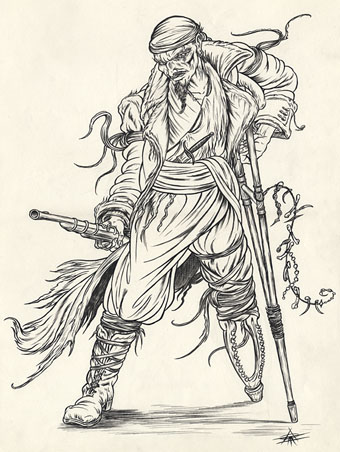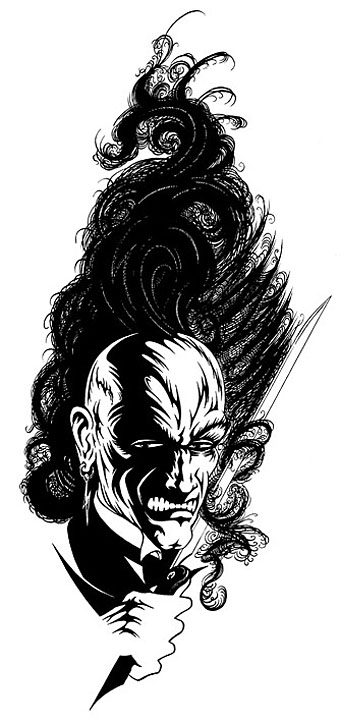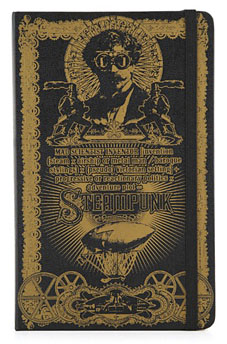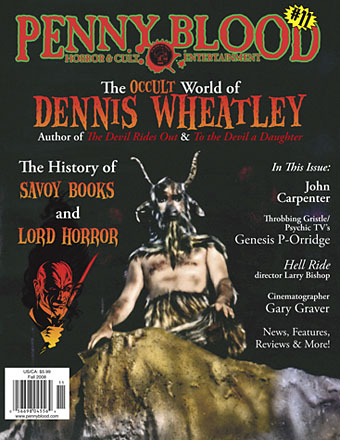Continuing from yesterday’s post, these nameless characters were sketches for a proposed comic strip that writer Jamie Delano and I were planning in the mid-Nineties. We had a feeling that the long-neglected pirate genre was due for a revival and talked about a revisionist take on buccaneering which would dispense with the Robert Newton antics and steer closer to the brutal reality. Among the touchstones there was On Stranger Tides by Tim Powers, the anarchist pirate community in Cities of the Red Night by William Burroughs and the ferocious scalp-hunters in Cormac McCarthy’s masterpiece, Blood Meridian. There was also talk of throwing some voodoo into the mix, hence the veve tattoos. It wasn’t to be, of course. Little of my work has ever resembled mainstream comics fare and Jamie’s publishers, DC Comics, had already been underwhelmed by the detailed style I was using in the Lovecraft and Lord Horror comics. When I tried presenting them with some trial pages in a more open style I was told that they’d been expecting to see more of my detailed line work…
We had a couple of other characters planned, including a tattooed islander inspired by Queequeg from Moby Dick, but the samples here are the best of the sketches. The shark- or whale-jaw false leg was my own invention and something I’m fairly sure I’ve not seen before. I’ve no idea whether such a thing is workable but it was a nice touch.







